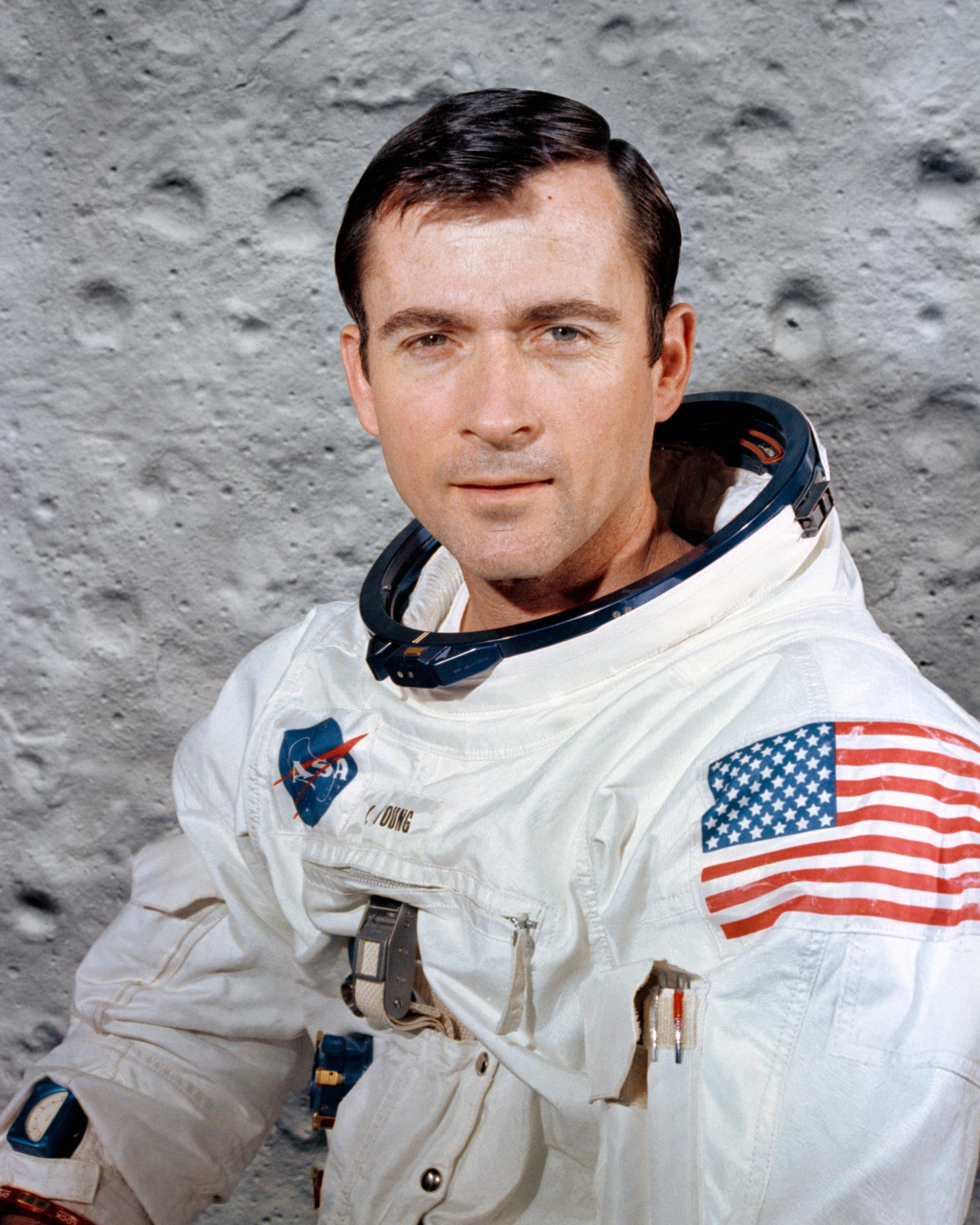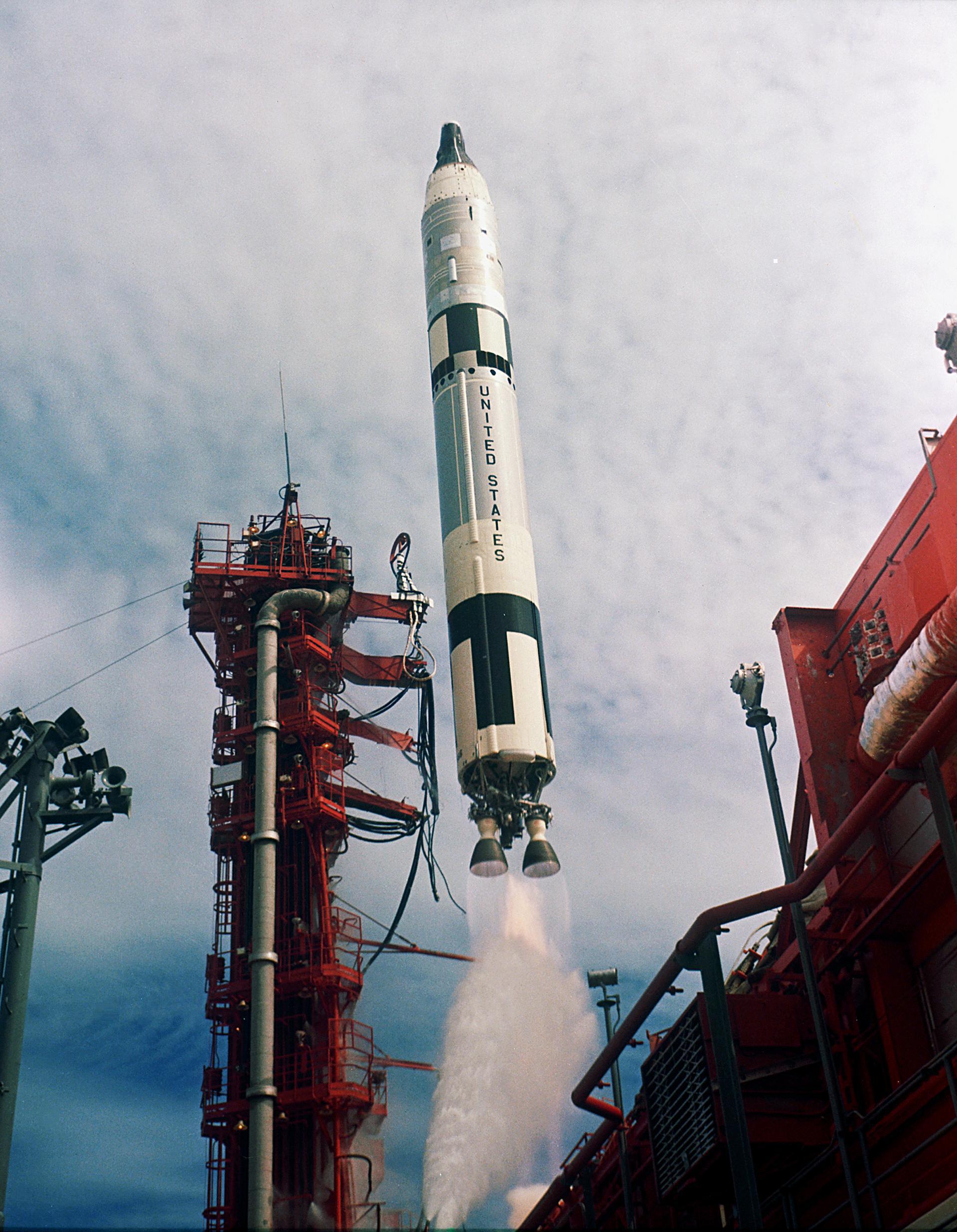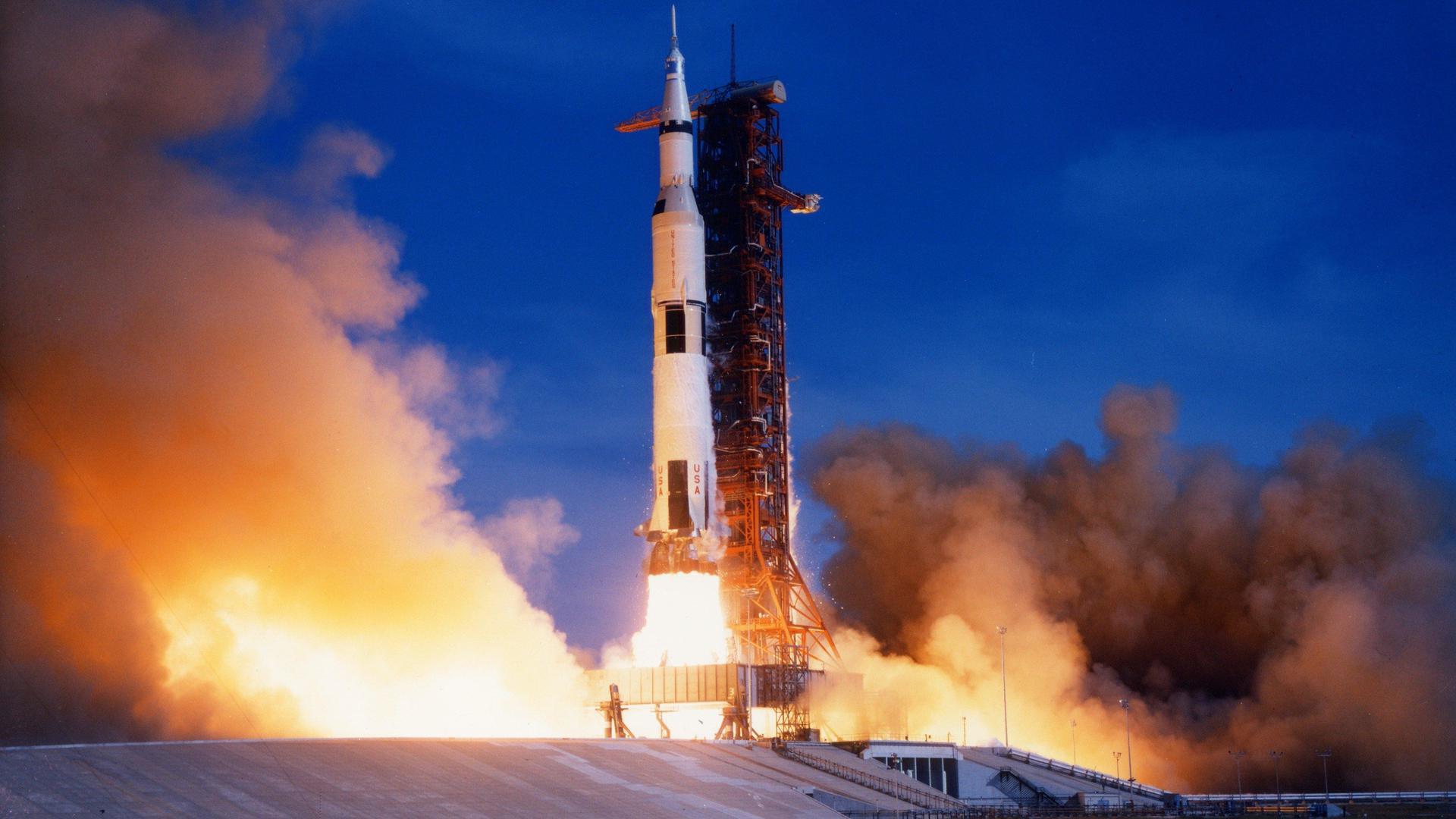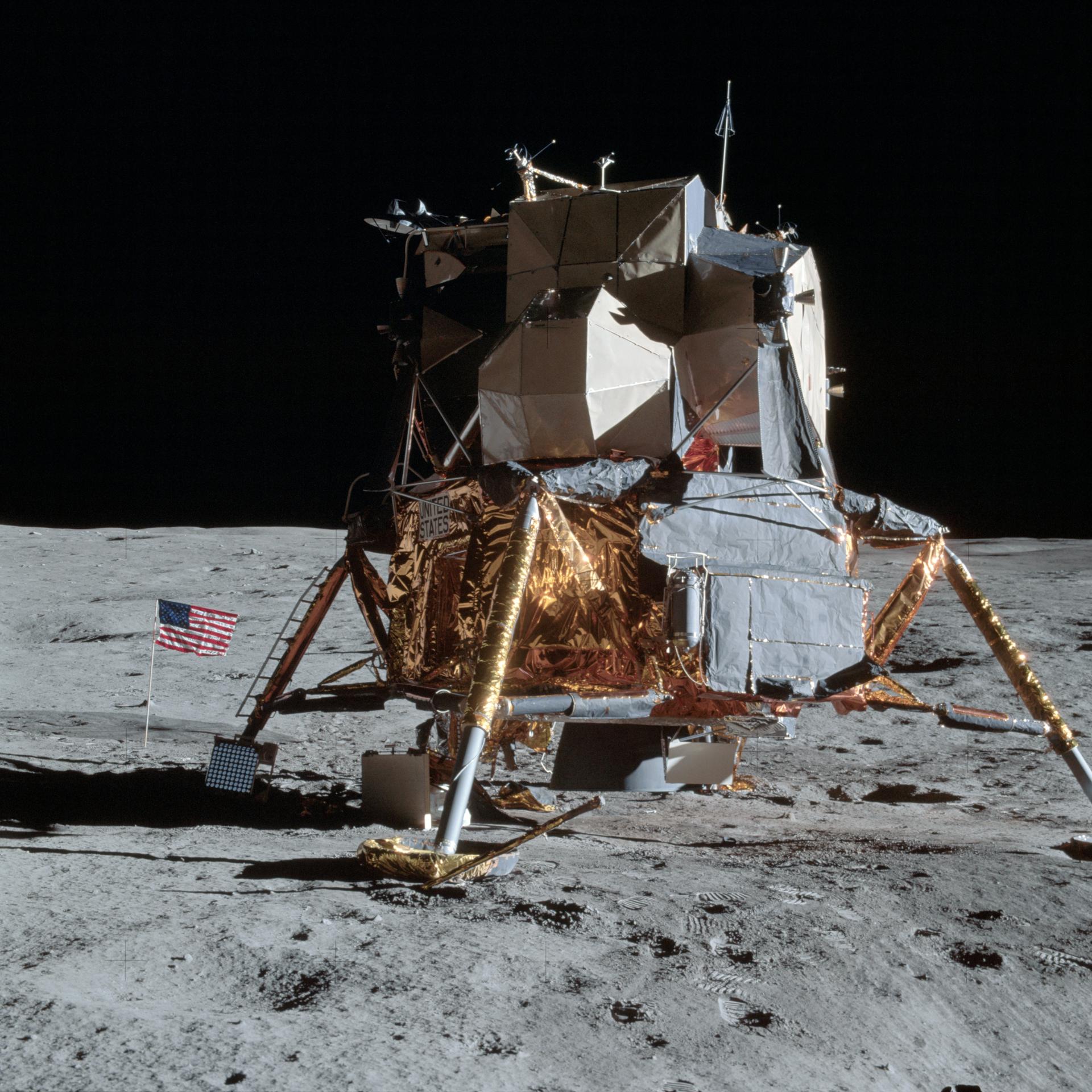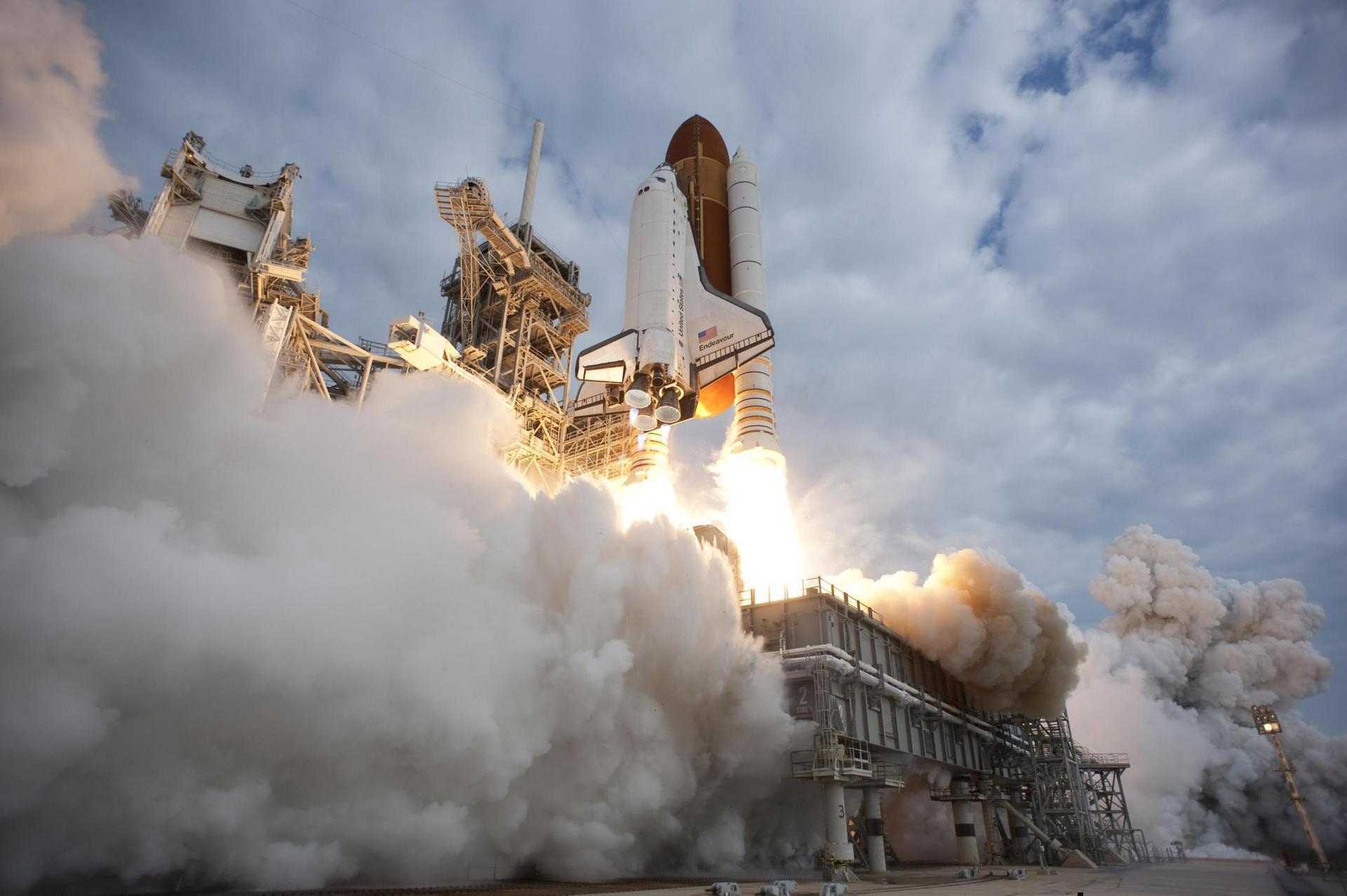John Young
American - (NASA)
Deceased
Date of Birth: Sept. 24, 1930
Date of Death: Jan. 5, 2018
John Watts Young was an American astronaut, naval officer and aviator, test pilot, and aeronautical engineer. He became the ninth person to walk on the Moon as Commander of the Apollo 16 mission in 1972. Young enjoyed the longest career of any astronaut, becoming the first person to fly six space missions (with seven launches, counting his lunar liftoff) over the course of 42 years of active NASA service. He is the only person to have piloted, and been commander of, four different classes of spacecraft: Gemini, the Apollo Command/Service Module, the Apollo Lunar Module, and the Space Shuttle. In 1965, Young flew on the first manned Gemini mission, and commanded another Gemini mission the next year. In 1969 during Apollo 10, he became the first person to fly solo around the Moon. He drove the Lunar Roving Vehicle on the Moon's surface during Apollo 16, and is one of only three people to have flown to the Moon twice. He also commanded two Space Shuttle flights, including its first launch in 1981, and served as Chief of the Astronaut Office from 1974 to 1987. Young retired from NASA in 2004. He died on January 5, 2018.
Titan II GLV | Gemini III
National Aeronautics and Space Administration | United States of AmericaCape Canaveral SFS, FL, USA
March 23, 1965, 2:24 p.m.
Status: Success
Mission:
Gemini 3 was the first crewed mission of the Gemini program. Mission Command Pilot Gus Grissom and PilotJohn Young flew 3 orbits in a flight that was the last one to be operated from the Cape Kennedy Air Force Station. The mission was considered a success and was the first flight to perform an orbital maneuver. Gemini 3 fired its engines for 1 minute and 14 seconds changing its orbit. The mission lasted 4 hours and 52 minutes.
Low Earth OrbitTitan II GLV | Gemini X
National Aeronautics and Space Administration | United States of AmericaCape Canaveral SFS, FL, USA
July 18, 1966, 10:20 p.m.
Status: Success
Mission:
Gemini 10 was the eighth crewed mission of the NASA's Project Gemini. It was commanded by Command Pilot John W. Young and Pilot Michael Collins. Gemini 10 achieved the objectives planned for the last two missions - rendezvous and docking with Agena target vehicle, and EVA. The mission started on July 18, 1966, 22:20:26 UTC and ended on July 21, 1966, 21:07:05 UTC.
Low Earth OrbitSaturn V | Apollo 10
National Aeronautics and Space Administration | United States of AmericaKennedy Space Center, FL, USA
May 18, 1969, 4:49 p.m.
Status: Success
Mission:
Apollo 10 was Command by Thomas P. Stafford, Command Module Pilot John W. Young, and Lunar Module Pilot Eugene A. Cernan. This mission was a F Mission which means a dress rehearsal for the upcoming Apollo 11 Mission that would be the first crewed mission to land on the moon.
Lunar OrbitSaturn V | Apollo 16
National Aeronautics and Space Administration | United States of AmericaKennedy Space Center, FL, USA
April 16, 1972, 5:54 p.m.
Status: Success
Mission:
Apollo 16 was the 10th crewed launch of the Apollo program. The craft was crewed by Commander John Young, Command Module Pilot Ken Mattingly & Lunar Module Pilot Charles Duke. The mission duration was 11 days, 1 hour, 51 minutes & 5 seconds during which time Young and Duke spent 71 hours on the surface of the Moon spending a total of 20 hours and 14 minutes on moonwalks while Mattingly spend 126 hours or 64 orbits in lunar orbit. While conducting moonwalks, Young and Duke collected 95.8Kg of lunar samples. During return trip to Earth Mattingly performed an EVA to collect film cassettes from the exterior of the service module.
Lunar OrbitApollo LM | Apollo 16
Northrop Grumman Space Systems | United States of AmericaDescartes Highlands, Moon
April 24, 1972, 1:25 a.m.
Space Shuttle Columbia / OV-102 | STS-1
National Aeronautics and Space Administration | United States of AmericaKennedy Space Center, FL, USA
April 12, 1981, noon
Status: Success
Mission:
STS-1 was the first orbital spaceflight of the Space Shuttle Program. The first orbiter Columbia took a 54.5 hour flight and circled the Earth 36 times. This was NASAs first craft to be manned during a testflight. Manned by John Young and Bob Crippen.
Low Earth OrbitSpace Shuttle Columbia / OV-102 | STS-9
National Aeronautics and Space Administration | United States of AmericaKennedy Space Center, FL, USA
Nov. 28, 1983, 4 p.m.
The National Aeronautics and Space Administration is an independent agency of the executive branch of the United States federal government responsible for the civilian space program, as well as aeronautics and aerospace research. NASA have many launch facilities but most are inactive. The most commonly used pad will be LC-39B at Kennedy Space Center in Florida.
Falcon 9
NROL-105
Space Launch Complex 4E - Vandenberg SFB, CA, USATwelfth batch of satellites for a reconnaissance satellite constellation built by SpaceX and Northrop Grumman for the National Reconnaissance Office …
Ceres-2
Demo Flight
Launch Area 95A - Jiuquan Satellite Launch Center, People's Republic of ChinaFirst test launch of Galactic Energy’s Ceres-2 rocket.
Long March 3B/E
Shijian 32
Launch Complex 2 (LC-2) - Xichang Satellite Launch Center, People's Republic of ChinaChinese experimental spacecraft of unknown purposes.
Ceres-1S
Tianqi 37-40
Rizhao offshore launch location - Haiyang Oriental Spaceport4 small satellites for LEO Internet of Things (IoT) communication purposes.
Long March 2C
AlSat 3A
Launch Area 94 (SLS-2 / 603) - Jiuquan Satellite Launch Center, People's Republic of ChinaEarth observation satellite built by China's CAST for the Algerian Space Agency.
